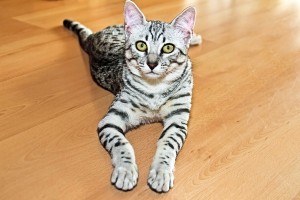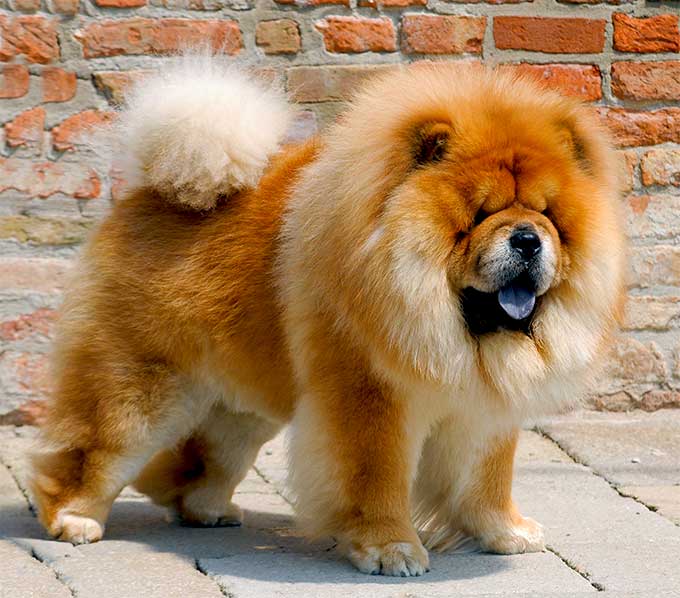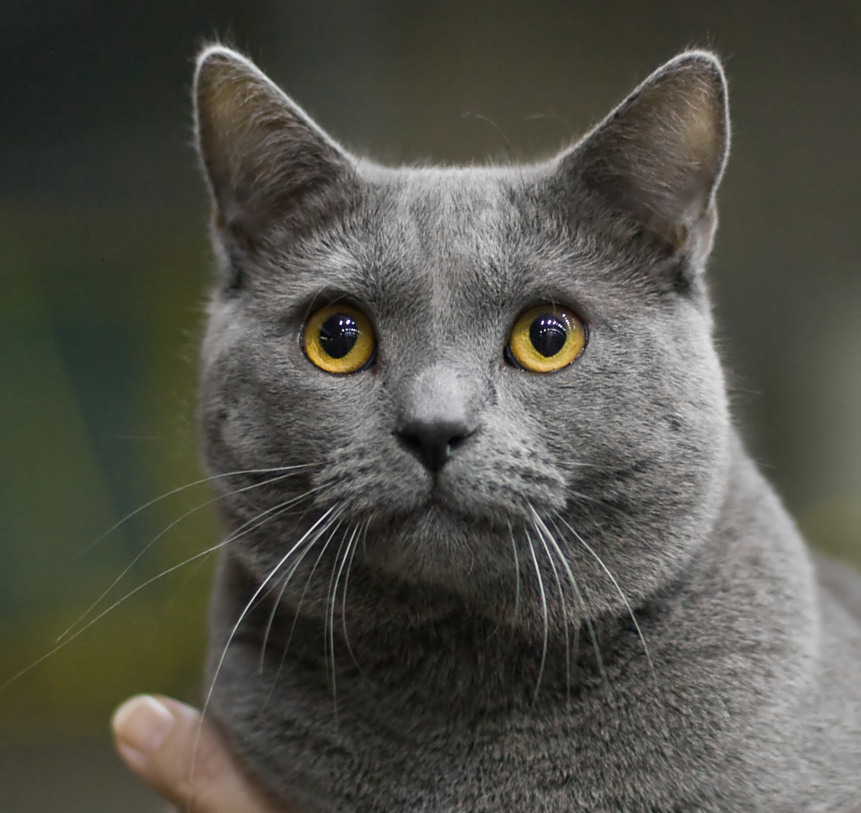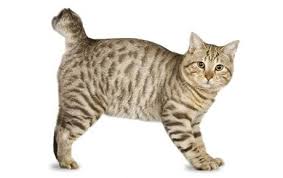Case study: Canine non‐epitheliotropic CD4‐positive cutaneous T‐cell lymphoma: a case report

Case study: Canine non‐epitheliotropic CD4‐positive cutaneous T‐cell lymphoma: a case report Robert Lo, Ph.D, D.V.M A 5‐year‐old, spayed female French Bulldog presented with multiple papules on the skin of the scapular area. Histopathological examination of skin biopsy specimens showed proliferated small lymphoid cells in the superficial dermis and in the area around the hair follicle. Immunohistochemical examination revealed that these cells were positive for CD3, CD4 and TCRαβ antibodies, but negative for CD1c, CD8α, CD8β, CD11c, CD20, CD45RA, CD90, MHC-II and TCRγδ antibodies. In addition, CD45 is highly expressed, and proliferation is very low. The genetic recombination test of the T cell receptor G chain detects the proliferation of recombinant clones. Skin lesions were removed by surgery because of progressing to the outside of the forelegs. The postoperative clinical course was good, and no recurrence was observed until the dog died in a traffic accident about a year later. https://www.ncbi.nlm.nih.gov/pmc/articles/PMC6498901/ Figure 1 Clinical features of the dog. Multiple papules are present on the right scapular area. Figure 2 Histopathological features of the lesion. Small lymphoid cells are proliferative at the superficial dermis and the perifollicular areas. Figure 3 Immunohistochemical analysis via the avidin‐biotin‐peroxidase complex method. Dense infiltration of CD4‐positive small lymphoid cells is evident at the superficial dermis. Bar = 200 μm.
Breed-related disease: Egyptian Mau

The Egyptian Mau is an African wild cat that is thought to be the cat originally domesticated by the Egyptians over 4,000 years ago. Cats depicted in ancient Egyptian artwork resemble the spotted Egyptian Mau and show that they were used for duck hunting as well as being worshipped by a cat cult. Feline genome data actually shows that the Egyptian Mau is more closely related to Western-derived breeds than those of the eastern Mediterranean. However, the Egyptian Mau has some distinct characteristics not seen in other breeds. Its ancient lineage notwithstanding, the Egyptian Mau was first shown in Europe prior to World War I, but during the war, its numbers were decimated with most of its known survivors found in Italy. Russian Princess Nathalie Troubetskoy, exiled in Rome shortly before World War II,was given a spotted Egyptian Mau kitten she named Baba. In 1956, Princess Troubetskoy emigrated to the US, bringing with her Baba and two other rescued Mau. Shortly thereafter, she established her cattery and established Egyptian Maus as a recognized breed in North America. Egyptian Maus were recognized by the Cat Fanciers’ Association in 1968 and The Canadian Cat Association shortly after. In 1972, a silver Egyptian Mau female bred by Princess Troubetskoy became the first Egyptian Mau to win a Canadian Cat Association grand championship. The Mau is a medium-size cat of 6 to 14 pounds, its most striking characteristic is his spotted coat in silver, bronze, or smoke (pale silver fur tipped in black), closely followed by his large gooseberry-green eyes. He is a medium-sized cat with a muscular body and a slightly rounded wedge-shaped head topped with medium-size to large ears. With hind legs slightly longer than the front legs, he gives the appearance of standing on tiptoe on his small, dainty feet . A medium-long tail is thick at the base, tapering slightly at the end. Maus likes to sit up high and survey their surroundings. They usually act as if they are in complete control of their environment. They are extremely strong and very active. But they have a very balanced temperament. We know that because you care so much about your cat, you want to take great care of him. That is why we have summarized the health concerns we will be discussing with you over the life of your Mau. By knowing about the health concerns common among Egyptian Maus, we can help you tailor an individual preventive health plan and hopefully prevent some predictable risks in your pet. Heart Disease: Cardiomyopathy is the medical term for heart muscle disease, either a primary inherited condition or secondary to other diseases that damage the heart. The most common form called hypertrophic cardiomyopathy, or HCM, is a thickening of the heart muscle often caused by an overactive thyroid gland. Renal failure: refers to the inability of the kidneys to properly perform their functions of cleansing waste from the blood and regulating hydration. Kidney disease is extremely common in older cats but is usually due to exposure to toxins or genetic causes in young cats. Allergy/Atopy : In humans, an allergy to pollen, mold, or dust makes people sneeze and their eyes itch. In cats, it makes the skin itchy. We call this form of allergy “atopy.” Commonly, the legs, belly, face, and ears are very likely to have this problem. Sources: https://lefthandanimalhospital.com/client-resources/breed-info/egyptian-mau/ https://www.hillspet.com/cat-care/cat-breeds/egyptian-mau
Breed-related disease: Chow Chow

The Chow Chow, among the world’s most singular and possibly oldest breeds, is depicted in artifacts of China’s Han Dynasty (c. 206 b.c.), but evidence suggests Chows go back much further and are progenitors of other spitz-type breeds—from the burly Norwegian Elkhound to the dainty Pomeranian. Chows have played many roles during their long history. At times, they were the lordly companions to Chinese nobles. An emperor of the Tang Dynasty, circa eighth century, was said to have owned a kennel facility that housed some 5,000 Chows and a permanent staff of twice that number. But over the centuries they also earned their keep as guarders, haulers, and hunters. Their ancestors were even a food source in the distant past of their densely populated, protein-starved homeland. The chow chow is a square dog with post-like straight legs. The straight legs contribute to a somewhat stilted gait, it has erect ears, a broad skull and a tail curled up over the back, and of course the blue/black tongue. The facial wrinkles (often obscured by hair) give the chow chow a scowling expression. For his size, the chow chow is a strong, sturdy dog. It has two coat types. We are most familiar with the rough or long coat. This is a straight, off-standing coat, which gives chow chow puppies a fuzzy, teddy bear appearance. The smooth coat is a shorter variation. Both coat types have a dense undercoat. Chow chows are most commonly seen in red or black coloration, but any solid color is acceptable. According to their past history, the Chow Chow is not a breed for everyone. Famously stubborn and potentially aggressive, this breed is likely to become a ‘problem dog’ in the hands of a novice owner. Chows are independent and dominant by nature, and in order to enjoy a happy relationship with their owners, need to be kept under control and in a submissive role. However, in the right hands, Chow Chows can be obedient and loyal pets. They are not especially playful, but rather play the role of an aloof and elegant companion, fond of affection but not fuss. They can be fierce guard dogs, as they are naturally distrustful of, and even aggressive towards, strangers and other animals. An important part of responsible Chow Chow ownership is early and intensive socialization to avoid these characteristics becoming a problem later in life. Chow Chows are prone to quite a number of health and behavioral disorders, here we listed some of the most common disease found in Chow Chow. Alopecia: Alopecia in dogs can be the result of skin infections such as ringworm (a fungal infection), a bacterial infection or parasites such as mites, and is often the result of the dog scratching or licking an itchy or sore area. Chows are prone to several conditions resulting in alopecia (baldness), including Colour Mutant Alopecia and Alopecia X. Thyroid Problems: Chow Chows are prone to a common condition called hypothyroidism in which the body doesn’t make enough thyroid hormone. Signs can include dry skin and coat, hair loss, susceptibility to other skin diseases, weight gain, fearfulness, aggression, and other behavioral changes. Heart Disease: Some breeds, like your Chow Chow, can be born with a variety of heart defects. Most affect the structure of the heart’s dividing wall or the vessels of the heart. Defects can also cause problems with heart valve function or the electrical signals that control the heartbeat. Melanoma: A cancer of the cells producing skin pigment (melanocytes). Uncommon, but Chows are predisposed because of their oral pigmentation. Diabetes: Diabetes mellitus is a fairly common disease in dogs. Any breed can be affected, but Chows have an above average incidence. Dogs with diabetes are unable to regulate the metabolism of sugars in their bodies and require daily insulin injections. Diabetes is a serious condition and one that is important to diagnose and treat as early as possible. Sources: https://www.freeportvet.com/services/dogs/breeds/chow-chow https://www.dogzone.com/breeds/chow-chow/ Photo credit: https://dogtime.com/dog-breeds/chow-chow#/slide/1 https://thehappypuppysite.com/chow-chow-names/
Breed-related disease: The Chartreux

John K. Rosembert The Chartreux is a French breed and is said to date to the 18th century and perhaps earlier. One of the tales of his origin is that the cats were bred by Carthusian monks. No doubt they helped to keep the monasteries free of mice and rats. Unfortunately for them, people also liked them for their pelts. Chartreux made their debut into cat society in 1931 at a cat show in Europe. In 1970, the first Chartreux were imported to the United States. The Cat Fanciers Association gave the breed full recognition in 1987. The Chartreux has a short and thick waterproof coat that is blue (grey). The eyes are orange, the head is round, and the cheeks full. This cat breed looks like he is smiling. The ears are medium-sized, the chest broad, and the legs are relatively short and fine-boned. The paws are medium-sized. The tail is heavy at the base, but flexible. The Chartreux is sweet and quiet with a gentle, amenable nature. He enjoys being a lap cat and is the ultimate television-watching pal. When a lap isn’t available he follows his people wherever they go. Throw a ball for him to chase, or be amazed by his acrobatics when you dangle a fishing-pole toy for his entertainment. The Chartreux chirps when he wants your attention but is otherwise quiet. Gentle he may be, but the Chartreux is also playful and intelligent. Challenge his brain and keep him interested in life by teaching him tricks and providing him with puzzle toys that will reward him with kibble or treats when he learns how to manipulate them. The Chartreux is a healthy and moderately active cat breed that may be susceptible to the following health conditions: Hip Dysplasia: This is rare in domestic cats, and is common in purebred cats. This occurs when the hip joint is loose, and leads to degenerative joint disease (osteoarthritis). Symptoms include lameness that can be mild to severe. Cats generally need no surgery for hip dysplasia. Weight reduction can help reduce discomfort. Ringworm: This is an infection of the skin, hair, or claws, and is caused by a fungus called dermatophyte. This occurs in 98% of cats. It spreads easily from cats to people. Symptoms include circular, bald patches that scale and have broken hairs in a ring-like fashion. Consult with your veterinarian for advice Gingivitis: This is when the gums become inflamed due to bacterial plaque. At this stage the ligaments and bone are not infected. Gum color in cats will change from a light pink to red or purple. The gum edge wills well. Symptoms include bleeding and bad breath. This can be reversed with proper teeth cleaning. That said, it can worsen and result in periodontitis. Consult with your veterinarian for an effective treatment plan. Sources: https://petonbed.com/chartreux/ http://www.vetstreet.com/cats/chartreux#health Photo credit: https://en.wikipedia.org/wiki/Chartreux
Case study: Coinfection with Tritrichomonas foetus and Giardia duodenalis in Two Cats with Chronic Diarrhea

Case study: Coinfection with Tritrichomonas foetus and Giardia duodenalis in Two Cats with Chronic Diarrhea Robert Lo, Ph.D, D.V.M A mixed infection of Tritrichomonas foetus and Giardia duodenalis was confirmed in two 6-year-old Maine Coon cats. One of the cats had a history of chronic liquid diarrhea and several treatment failures. Both cats observed G. duodenalis and trichomonas from the fecal smears, and the infection of T. foetus was also confirmed by RT-PCR. The cat recovered completely after taking ronidazole treatment. In refrigerated stool specimens collected from cats with chronic diarrhea, drop-shaped trichomonad pseudocysts, which are smaller than the cysts of G. duodenalis, were detected. When the pseudocysts are stained with Lugol’s solution or Giemsa, they appear brown or light blue, respectively, and their morphological characteristics are similar to those of bovine T. foetus in vitro. It is worth noting that the pseudocysts in feline trichomonads may be a way for the protozoa to fight against unfavorable environments. Clinicians detected pseudocysts in refrigerated stool, which may be a useful clues to the diagnosis of this disease. https://www.ncbi.nlm.nih.gov/pmc/articles/PMC6005279/ Figure 1 Fecal smears of a 6-month-old female Maine Coon cat with chronic liquid diarrhea, stained with Lugol’s solution (a–c) and Giemsa stain (d–f); showed (a) and (d) Giardia duodenalis trophozoites ; (B) and (e) a Giardia duodenalis cyst; (c) and (f) drop-shaped trichomonads (630x). Fecal smears from a 6-month-old female Maine Coon cat with chronic liquid diarrhea stained with Lugol’s solution (a–c) and Giemsa stain (d–f); (a) and (d) showed Giardia duodenalis trophozoite; (b) and (e) showed a Giardia duodenalis cyst; (c) and (f) showed drop-shaped trichomonads (630x). Figure 2 Trichomonads in fecal smear from the cat with diarrhea. Arrow heads in (a) indicate anterior flagella emerging from the trophozoite, while arrow heads in (b) indicate undulating membrane (1000x). Figure 3 Typical morphology of trichomonads observed in saline solution-diluted fresh fecal smear from the cat with diarrhea. Arrow heads in (a) and in (b) indicate anterior flagella and undulating membrane, respectively (630x). Figure 4 Drop-shaped unidentified elements in fecal smears stained with Lugol’s solution (a) and Giemsa stain (b-c). Arrow heads in (a) indicate an internal oval structure (400x). Arrow heads in (b) indicate a curved linear structure (1000x). Arrow heads in (c) indicate an undulated portion of the surface (1000x).
Toxoplasmosis In Cats: A Review

Toxoplasmosis In Cats: A Review. Maigan Espinili Maruquin Structure and Replication Fig. 01 Structure of Toxoplasma gondii (https://www.123rf.com/photo_81668845_stock-vector-toxoplasma-gondii-structure-.html) The family Felidae is the only animal species that hosts infective oocysts of Toxoplasma gondii and passes through their feces, however, this parasite infects most species of birds and mammals (Elmore, Jones et al. 2010). This pathogen is an obligate intracellular coccidian parasite an can infect warm-blooded animals, including people (Hartmann, Addie et al. 2013) (Dubey JP, 2005; Dubey JP and Lappin MR, 2006). The complex life cycle of T. gondii undergoes three distinguished stages. The tachyzoites, formerly called the trophozoite or endozoite, is the active multiplying stage and most likely to cause clinical disease and spread to almost all organs. The next stage is the bradyzoite stage where multiplication is slow and usually within a tissue cyst, leading to a life-long chronic infection. This stage penetrates the small intestine epithelial cells. Finally, the oocysts, which are excreted and shed in feces of infected felid, are the result of sexual reproduction within the intestine and constitute the environmentally resistant stage. (Dubey JP, 2005; Dubey JP and Lappin MR, 2006) (Dabritz, Gardner et al. 2007, Dabritz, Miller et al. 2007, Hartmann, Addie et al. 2013, Wyrosdick and Schaefer 2015, Calero-Bernal and Gennari 2019). Oocysts are non- infectious when excreted in feces but begin to become sporulate after 1-5 days of exposure to air and moisture. These are round to oval in shape and around 10 x 12 μm in size. Most naïve cats who get infected take 3–10 days of ingestion of tissue cysts to complete the cycle (Hartmann, Addie et al. 2013) (Dubey JP, 2005; Dubey JP and Lappin MR, 2006). Infection/ Pathogenesis The very first case of toxoplasmosis in cats was diagnosed from a domestic cat in Middletown, NY, in 1942 (Olafson and Monlux, 1942; Dubey, 2008)(Wyrosdick and Schaefer 2015). Generally, most cats at 6 to 10 weeks were detected to have antibodies to T. gondii while maternally transferred antibodies (MTAs) disappear by 12 weeks of age. Seropositivity increases with the age and varies according to the cat’s lifestyle (like hunting food) (Dubey, J.P., 2010)(Dubey, Cerqueira-Cézar et al. 2020). The oocysts were noted to remain infectious in the environment for at least 12 months (Hutchison 1965, Wyrosdick and Schaefer 2015). Generally, transmissions of the parasite are congenital infection, ingestion of the infected tissue, and ingestion of oocyst-contaminated food or water (Dubey JP and Lappin MR., 2006) (Hartmann, Addie et al. 2013). Most likely, congenitally infected kittens show clinical signs while post-natal infections are usually through ingestion of infected tissue cysts and in some cases, oocysts (Dubey and Jones 2008, Elmore, Jones et al. 2010). Queens giving birthe to infected kittens during gestation can become infected transplacentally or via suckling (Dubey JP, et al., 1996) (Calero-Bernal and Gennari 2019) The most common method of feline infection due to predation of intermediate hosts is tissue cyst ingestion where shedding occurs in 3 to 5 days, while ingestion of tachyzoites takes 8- 10 days, and 21-24 days after ingestion of oocysts (Dubey, J.P., 2010) (Schares, Vrhovec et al. 2008, Wyrosdick and Schaefer 2015). Clinical Signs Feline toxoplasmosis develops clinical signs rarely but causes inflammation and tissue necrosis from intracellular growth of tachyzoites (Dubey JP and Lappin MR, 2006)(Hartmann, Addie et al. 2013). It frequently results to hepatitis, pneumonia, and encephalitis with signs of ascites, lethargy, and dyspnea while infected adults do not show specific clinical signs (Brennan A, et al, 2016) (Dubey and Carpenter 1993, Calero-Bernal and Gennari 2019). Moreover, observations also showed extra- intestinal enteritis (Cohen, Blois et al. 2016) and inflammatory intestinal disease (Peterson, Willard et al. 1991). Tissues that are most commonly affected are the central nervous system, the muscles, the lungs, and the eyes. Infected cats show neurological signs, muscle hyperesthesia, jaundice, diarrhea, fever, depression, anorexia, vomiting, paresis, dermatitis and weight loss (Dubey JP and Lappin MR, 2006) (Hartmann, Addie et al. 2013, Dubey, Cerqueira-Cézar et al. 2020). When severe respiratory and neurological signs were observed, it’s usually fatal (Dubey and Carpenter 1993). Diagnosis Diagnosis in cats for toxoplasmosis include ante-mortem fecal examination for oocysts and serologic testing (Johnson, Tinker et al. 2009, Elmore, Jones et al. 2010). However, geographical location may influence differential diagnosis (Calero-Bernal and Gennari 2019). The shedding of the oocysts of an infected cats may only be once in their lifetime (Elmore, Jones et al. 2010) which can be diagnosed in their fecal samples via microscopy (Hartmann, Addie et al. 2013). However, there is low probability of finding oocysts in the fecal samples of infected cats and there is a confusing morphological resemblance of the T. godii oocysts to other coccidian like Hammondia hammondi and Besnoitia spp (Elmore, Jones et al. 2010). Therefore, molecular and bioassay techniques can be used to distinguish them while only mouse bioassay is the definitive confirmation method (Dubey 2009, Elmore, Jones et al. 2010). In diagnosing T. gondii, confirmation is when the organism is found in body fluids or tissue (Hartmann, Addie et al. 2013). For tachyzoites detection, ante- mortem diagnosis in tissues and body fluids during acute illness may use cytology or polymerase chain reaction (PCR). A definitive diagnosis is when tachyzoites were detected rarely in blood but aqueous humour, lymph nodes, and transtracheal or bronchoalveolar lavage fluid can be used (Hartmann, Addie et al. 2013). On the other hand, antibodies of the IgM, IgG and IgA isotypes can be detected by immunofluorescence assay (IFA). For antibody- negative, cats are likely to shed oocysts while antibody- positive cats don’t shed oocysts wherein antibodies need 2–3 weeks to develop (Dubey JP, 2005)(Hartmann, Addie et al. 2013). Despite the development of immunofluorescence and ELISA tests, requirement for species-specific protein conjugate makes it limitedly used in veterinary diagnostics (Wyrosdick and Schaefer 2015). After comparing indirect hemagglutination test, latex agglutination test, Feldman dye test and modified agglutination tests, the aqueous humour resulted to be the most sensitive of
Heartworm in Cats

Heartworm in Cats Andy Pachikerl, Ph.D Introduction of Feline Heartworm Heartworm disease is a serious and potentially fatal disease in pets worldwide and it is caused by foot-long worms (heartworms) that dwells in the heart, lungs, and associated blood vessels of affected pets. This in turn cause severe lung disease, heart failure and damage to other organs in the body. Heartworm disease affects dogs, cats, and ferrets, but heartworms also live in other mammal species, including wolves, coyotes, foxes, sea lions and—in rare instances—humans. Because wild species such as foxes and coyotes live in proximity to many urban areas, they are considered important carriers of the disease (Ettinger, et al., 2010). Among mammalian definitive hosts, they are best adapted to domesticated and wild dogs. If untreated, their numbers can increase, and dogs have been known to harbour several hundred worms in their bodies. Heartworm disease causes lasting damage to the heart, lungs, and arteries, and can affect the dog’s health and quality of life long after the parasites are gone (2019). For this reason, prevention is by far the best option, and treatment—when needed—should be administered as early in the course of the disease as possible. Heartworm disease in cats is quite distinctive from heartworm disease in dogs. Since cat is an atypical host for heartworms, most worms in cats do not survive to the adult stage. Cats with adult heartworms usually have just one to three worms, and many cats affected by heartworms have no adult worms. Even if feline host of heartworm rarely occurs, cat heartworm disease often goes undiagnosed. Therefore, it is important to understand that even immature worms cause real damage in the form of a condition known as heartworm associated respiratory disease (HARD). Moreover, the medication used to treat heartworm infections in dogs cannot be used in cats, so prevention is the only means of protecting cats from the effects of heartworm disease (Society, 2007). Transmission Figure 1. Diagram from American Heartworm Society showing how the heartworm is spread and inter-transmission can occur via different host pets. The mosquito plays an essential role in the heartworm life cycle. Adult female heartworms living in an infected dog, fox, coyote, or wolf produce microscopic baby worms called microfilaria that circulate in the bloodstream. When a mosquito bites and takes a blood meal from an infected animal, it picks up these baby worms, which develop and mature into “infective stage” larvae over a period of 10 to 14 days (Johnstone, 1998). Then, when the infected mosquito bites another dog, cat, or susceptible wild animal, the infective larvae are deposited onto the surface of the animal’s skin and enter the new host through the mosquito’s bite wound. Once inside a new host, it takes approximately 6 months for the larvae to mature into adult heartworms. Once mature, heartworms can live for 5 to 7 years in dogs and up to 2 or 3 years in cats. Because of the longevity of these worms, each mosquito season can lead to an increasing number of worms in an infected pet (Knight, et al., 1998). Symptoms and signs of heartworm in cats Signs of heartworm disease in cats can be of two extremes: very subtle or plain out dramatic. Symptoms may include coughing, asthma-like attacks, periodic vomiting, lack of appetite, or weight loss. Occasionally an affected cat may have difficulty walking, experience fainting or seizures, or suffer from fluid accumulation in the abdomen. Unfortunately, the first sign in some cases is collapse of the cat, or sudden death (Society, 2007). How significant is my cat’s risk for heartworm infection? Figure 2. Diagram showing the severity of heartworms in the USA as shown by the American Heartworm Society Many factors must be considered, even if heartworms do not seem to be a problem in your local area. Your community may have a greater incidence of heartworm disease than you realize—or you may unknowingly travel with your pet to an area where heartworms are more common. Heartworm disease is also spreading to new regions of the country each year. Stray and neglected dogs and certain wildlife such as coyotes, wolves, and foxes can be carriers of heartworms. Mosquitoes blown great distances by the wind and the relocation of infected pets to previously uninfected areas also contribute to the spread of heartworm disease (this happened following Hurricane Katrina when 250,000 pets, many of them infected with heartworms, were “adopted” and shipped throughout the country). The fact is that heartworm disease has been diagnosed in all 50 states, and risk factors are impossible to predict. Multiple variables, from climate variations to the presence of wildlife carriers, cause rates of infections to vary dramatically from year to year—even within communities. And because infected mosquitoes can come inside, both outdoor and indoor pets are at risk. For that reason, the American Heartworm Society recommends that you “think 12:” (1) get your pet tested every 12 months for heartworm and (2) give your pet heartworm preventive 12 months a year. Diagnosis Heartworm disease is a serious, progressive disease. The earlier it is detected, the better the chances the pet will recover. There are few, if any, early signs of disease when a dog or cat is infected with heartworms, so detecting their presence with a heartworm test administered by a veterinarian is important. The test requires just a small blood sample from your pet, and it works by detecting the presence of heartworm proteins. Some veterinarians process heartworm tests right in their hospitals while others send the samples to a diagnostic laboratory. In either case, results are obtained quickly. If your pet tests positive, further tests may be ordered (Yin, 2007). Diagnosis period Heartworm infection in cats is harder to detect than in dogs, because cats are much less likely than dogs to have adult heartworms. The preferred method for screening cats includes the use of both an antigen and an antibody test (the “antibody”
Breed-related disease: The Rottweiler

John K. Rosembert The Rottweiler is a breed of domestic dog regarded as medium-to-large, or large. The dogs were known in German as Rottweiler Metzgerhund, meaning Rottweil butchers’ dogs, because they are descends from dogs used by the Romans to drive the herds that fed the army as it marched through Europe. Along the way, the Roman dogs bred with local dogs, and in the town of Rottweil, the result was strong dogs used by butchers to drive cattle to market. On the way home, the dogs served as protection, guarding the butcher’s proceeds from robbers. Rottweilers are slightly longer than tall, large dogs, ranging in height from 22 inches for a small female to 27 inches for a large male. They are blocky dogs with massive heads. Ears lie fairly tight to the head, hanging down somewhat. Muzzles are square and strong, but Rottweilers can be a bit drooly because of loose flews (lips). Rottweilers should always be black with tan points, and the ideal coat is quite short, dense, and a bit harsh. The Rottweiler breed often gets a bad reputation. You’ve probably heard — in one way or another — that Rotties can be incredibly aggressive, downright mean, and off-putting to other people. While these traits can certainly be true, and are perhaps a bit worse when it comes with a dog powerful enough to do damage, these traits don’t apply to most Rottweilers. The personality of every dog depends on their upbringing, how they were bred, and the personality of their parents. These ‘bad’personalities often come from poorly bred puppies that didn’t experience proper socialization. The true personality of a Rottweiler, and what they were bred to be, is a mixture of the loyal, steadfast watchdog, and the incredibly homebody. Also, despite popular belief, the Rottweiler loving is actually one of the most intelligent dog breeds in existence . As both an independent and intelligent breed, the Rottweiler requires an experienced hand for control, letting a dominant-minded dog run unchecked within the family can lead to many negative behaviors. Apart from these traits, it’s important to realize that there can be quite a lot of variation in the personality of Rottweiler’s, Some tend to be natural entertainers who love to play, while others may be much more reserved and calm. Besides, even with their dominant temperament, this breed is vulnerable to several diseases, here are some of the most common diseases related to this breed. Bloat : Gastric dilatation volvulus, also known as GDV or bloat, usually occurs in dogs with deep, narrow chests. This means the Rott is more at risk than other breeds. When a dog bloats, the stomach twists on itself and fills with gas. When a dog bloats, the stomach twists on itself and fills with gas. The twisting cuts off the blood supply to the stomach and sometimes to the spleen. Left untreated, the disease is quickly fatal, sometimes in as little as half an hour. Bone and Joint Problems : A number of different musculoskeletal problems have been reported in Rottweilers. While it may seem overwhelming, each condition can be diagnosed and treated to prevent undue pain and suffering. With diligent observation at home and knowledge about the diseases that may affect your friend’s bones, joints, or muscles, you will be able to take great care of him throughout his life. Neurologic Problems : Several neurologic diseases can afflict Rottweilers. Symptoms of neurological problems can include seizures, imbalance, tremors, weakness, or excessive sleeping. Hip dysplasia: Rottweilers are one of the breeds most affected by hip dysplasia, a genetic deformity in which the head of the femur doesn’t fit properly into the hip socket. This condition can range from mild to severe. Severe cases are extremely painful and often require surgery to correct. Even with the surgery, the dog is likely to develop arthritis as he ages. Inflammatory Bowel Disease : Inflammatory bowel disease, or IBD, is an immune system disorder common in Rotts in which the intestinal lining becomes overrun with immune system cells called lymphocytes and plasmacytes. The stomach and/or intestinal lining becomes thickened affecting his ability to absorb nutrients properly. Chronic vomiting or diarrhea is common, or symptoms may flare up suddenly and then improve again for a time. Stress, diet change, or intestinal parasites can make IBD worse. Sources: http://www.vetstreet.com/dogs/rottweiler#overview https://www.harlingenveterinaryclinic.com/services/dogs/breeds/rottweiler# Photo credit: https://en.wikipedia.org/wiki/Rottweiler https://www.goldenacresdogs.com/guard-dogs-rottweiler.html
Breed-related disease: American Bobtail

John K. Rosembert The American Bobtail is an uncommon breed of domestic cat which was developed in the late 1960s, which descends from a short-tailed kitten acquired by a couple John and Brenda Sanders during a vacation to Arizona. It is a medium to large, semi-cobby cat. Their sturdy bone structure and well-developed musculature, along with their broad chest and slightly arched back (due to longer hind than front legs), give them the appearance of a small Lynx. Their head is broad with prominent cheeks and a strong chin, and a triangular-shaped muzzle a little wider than it is long. Their eyes are big and slightly almond-shaped. Their ears, which are average sized and sit quite low on the skull, each have a small tuft of fur at the end known as “Lynx tips”. The variety with mid-length fur also have tufts of fur between the toes. The American Bobtail is devoted to family, and is very easily trained to walk on a leash. This cat breed enjoys playing with interactive cat toys, other cats, and children. The American Bobtail makes for an ideal family companion. This is a smart cat who enjoys puzzle toys, learning tricks, and playing fetch. He isn’t as vocal as some breeds, but he communicates his pleasure with chirps, clicks and trills, as well as the standard purr and meow. The American Bobtail has an adaptable nature, so he’s a good traveler. Long-distance truckers and travelers find him to be an excellent companion. The cats have also found a niche with some psychotherapists because of their loving and intuitive nature. That same adaptability and kindness makes him a good family companion and suited to a variety of lifestyles, from relaxed to rowdy. American Bobtails are generally healthy cats with no predispositions to inherited health conditions, however that doesn’t mean that every American Bobtail will never experience health problems, it’s important to note: American Bobtails with no tail may experience: Spinal Problems: The American Bobtail may be prone to spinal problem due to their short spine. Polycystic kidney disease (PKD): A condition characterized by the development of cysts on one or both kidneys. Hypertrophic cardiomyopathy: Which is the thickening of the heart muscle. Hip Dysplasia: This is rare in domestic cats, and is common in purebred cats. This occurs when the hip joint is loose, and leads to degenerative joint disease. (osteoarthritis) Symptoms include lameness that can be mild to severe. Cats generally need no surgery for hip dysplasia. Weight reduction can help reduce discomfort. Source: https://petonbed.com/american-bobtail/ https://www.thesprucepets.com/american-bobtail-full-profile-history-and-care-4705973 Photo credit: https://cattime.com/cat-breeds/american-bobtail-cats
Breed-related disease: Dachshund

The dachshund originated in Germany as a hunting dog. Though its origins can be traced as far back as the 15th century, the breed’s development really began in 17th century Germany. Called dachshunds, which translates as “badger dogs,” these short hounds did just that—they hunted badgers. Their short legs, loose skin, big chests, determination, and independence were ideal for digging, entering tunnels, and of course, fighting badgers. Their flap-down ears help keep dirt and debris out when burrowing. The Dachshund comes in three coat varieties and two sizes. The original Dachshunds were smooth coated and arose from crosses of the Bracke, a miniature French pointer, with the Pinscher. They’re all short with cute stubby legs, but Dachshunds actually come in three sizes: standard, miniature, and kaninchen (“rabbit” in German). A full grown standard Dachshund averages 15-28 lbs. while the miniature typically weighs less than 11 lbs. The kaninchen usually weighs around 8-10 lbs. The word “icon” is terribly overworked, but the Dachshund—with his unmistakable long-backed body, little legs, and big personality—is truly an icon of purebred dogdom, Dachshunds aren’t built for distance running, leaping, or strenuous swimming, but otherwise these tireless hounds are game for anything. Smart and vigilant, with a big-dog bark, they make fine watchdogs. Bred to be an independent hunter of dangerous prey, they can be brave to the point of rashness, and a bit stubborn, but their endearing nature and unique look has won millions of hearts the world over. Dachshunds, as with every BREED, have certain health issues that occur more frequently within their “genetic pool. In this article we’ll mention some of the most common health issues that are very prone to Dachshunds Dachshund Stomach Issues: it is not uncommon for Dachshund’s to experience stomach issues. Some are merely sensitive to certain foods or abrupt food changes. Others can suffer from gastroenteritis, a term referring to stomach issues resulting in inflammation of the gastrointestinal tract. Dachshunds tend to be more prone to developing hemorrhagic gastroenteritis. Liver Disease: Dachshunds are more likely than most breeds to have a liver disorder called portosystemic shunt (PSS). This is a hereditary condition in which the liver can’t effectively remove toxins from the bloodstream, Surgery is sometimes needed, but many times you can treat it with medication and a special diet. Cancer/ tumor : Dachshunds have a higher than average risk of developing cancers of the skin, fat cells, and anal sacs, this includes a particular risk of developing mast cell tumors and squamous cell carcinoma. Dachshunds have an increased risk of getting cancer. Eye Problems: Dachshunds are prone to several different eye problems. Some are extremely painful; others can cause blindness if not treated right away. Cataracts and glaucoma are common eye issues that Dachshunds may experience. Glaucoma is a very painful disease that can lead to blindness if not treated, while Cataracts are more common in older Dachshunds and can cause blindness, but surgery can restore sight in some cases. Intervertebral disk disease: conditions severe enough for hind-end paralysis are so common that Dachshunds are one of the breeds most likely to spend part of their lives in “canine wheelchairs”: wheeled carts that support the rear of the dogs. Because of their long, low-slung spines, normal canine behavior like jumping off the sofa may result in a slipped, pinched, herniated or ruptured disc Diabetes mellitus: which is caused by the failure of the pancreas to regulate blood sugar, diagnosed by the presence of the typical clinical signs (excess thirst, excess urination, excess appetite, and weight loss), a persistently high level of glucose in the blood, and the presence of glucose in the urine. Diabetes is the only common disease that will cause the blood glucose level to rise substantially in dogs. Sources: http://www.vetstreet.com/dogs/dachshund#health https://formydachshund.com/11-of-the-most-common-health-issues-in-dachshunds/ https://en.wikipedia.org/wiki/Dachshund Dachshund
